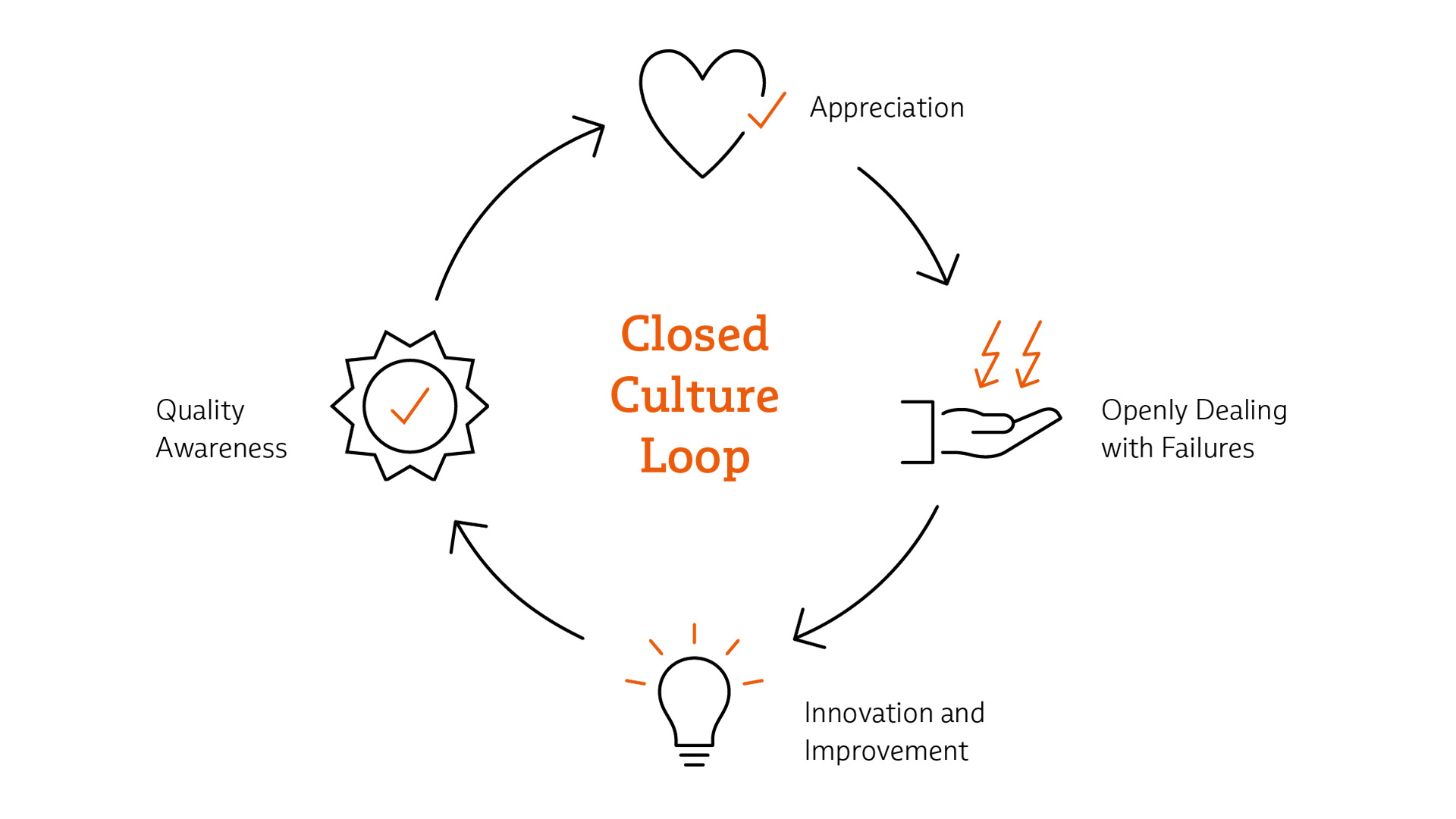Of course, you can also reach us via e-mail or our contact form. We will get in touch with you as soon as possible.
"Culture eats strategy for breakfast." This famous quote by Peter Drucker, pioneer of modern management theory, sums up the connection between a strong corporate culture and the success of companies. But corporate culture has a decisive influence not only on strategy, but also on our favorite topic, quality. We would even go so far as to say, "Culture eats quality for breakfast." Perhaps you'll agree with us by the end of this Insight article.
We all agree that corporate culture is important. But a definition is complicated by the fact that culture is open to interpretation. After all, corporate culture develops as a result of people working together and living together in a company. How do we solve tasks and also conflicts together, how do we celebrate successes, what rituals do we have in everyday life? The answers to these questions are unique and individual for each company. In most cases, the actions, behaviors and atmosphere that make up a corporate culture develop over years – consciously, but above all unconsciously. And they are based primarily on subjective experiences such as feeling and feeling good.
If we want to analyze the corporate culture in our company, the following definition helps in my experience: Corporate culture is the consensus of values and the way managers work with team members and team members work with each other based on these values.
The interplay between corporate culture and quality can be excellently described as a control loop, as we also know it from quality management. This is because the processes of a strong corporate culture and a pronounced quality awareness are interrelated in a logical sequence. Let's start with the topic of appreciation. If we treat each other as equals and value each other both in our work and in our humanity, we create the ideal basis for dealing openly with failures.
After all, it is only in an atmosphere that promotes courage and openness that mistakes can be talked about honestly. If we focus here not on who did something wrong, but on what we can do to do it better next time, we optimize our products as well as processes and open doors for innovation.
With this proactive attitude, we create a pronounced quality awareness in the sense of continuous improvement, which in turn nurtures appreciative interaction with one another. This is because we trust each other that we are all acting with the best of intentions to achieve high quality in our company. This closes the Closed Culture Loop.

Just like quality itself, a quality-promoting corporate culture must also be part of the corporate strategy, and a clear commitment from management is essential. We have identified our corporate mission statement as a suitable place for this commitment. In a revision process, not only have our vision and mission been recorded, but our values and quality policy have also been incorporated.
In order for the mission statement to become a lived reality throughout the entire team in the sense of a corporate culture that promotes quality, all managers must be brought on board. For our corporate values to be reflected in the day-to-day work of the team, all managers must feel them, live them and demand them. Their role in this process is that of cultural ambassadors with a role model function, who are also responsible for the cultural fitting of new team members and their integration into the cultural fabric. We will therefore work with managers to develop and implement leadership principles based on the mission statement.
After all, a corporate culture that enables the Closed Culture Loop must be experienced and lived by every team member in their day-to-day work – whether in trusting and supportive collaboration within the team or in binding and appreciative external contact with customers and prospects. If we all share the same values in our company, this leads to increased identification with the specialist task, courage to innovate, an open error culture with a continuous improvement process, or in short: a quality-promoting corporate culture.
In order to avoid wrong decisions with far-reaching consequences when inspecting industrially manufactured parts, the measuring and inspection equipment used must be demonstrably suitable for the intended purpose. ISO 9001 already stipulates that organizations "shall determine and provide the resources... continue reading
Effective quality management – a wide variety of companies would probably come up with the most diverse definitions of what that actually is. What role does quality still play today? And what role should it play? In an interview with Thomas Stöber, Vice President Management Systems at WKW, Lutz Krämer,... continue reading
In 2022, the High Level Structure will celebrate its tenth anniversary. As the basic structure for management system standards, its uniform definitions and identical structure make it easier to apply different standards. In this BloQ article, we take a closer look at the High Level Structure and its... continue reading
No Comments